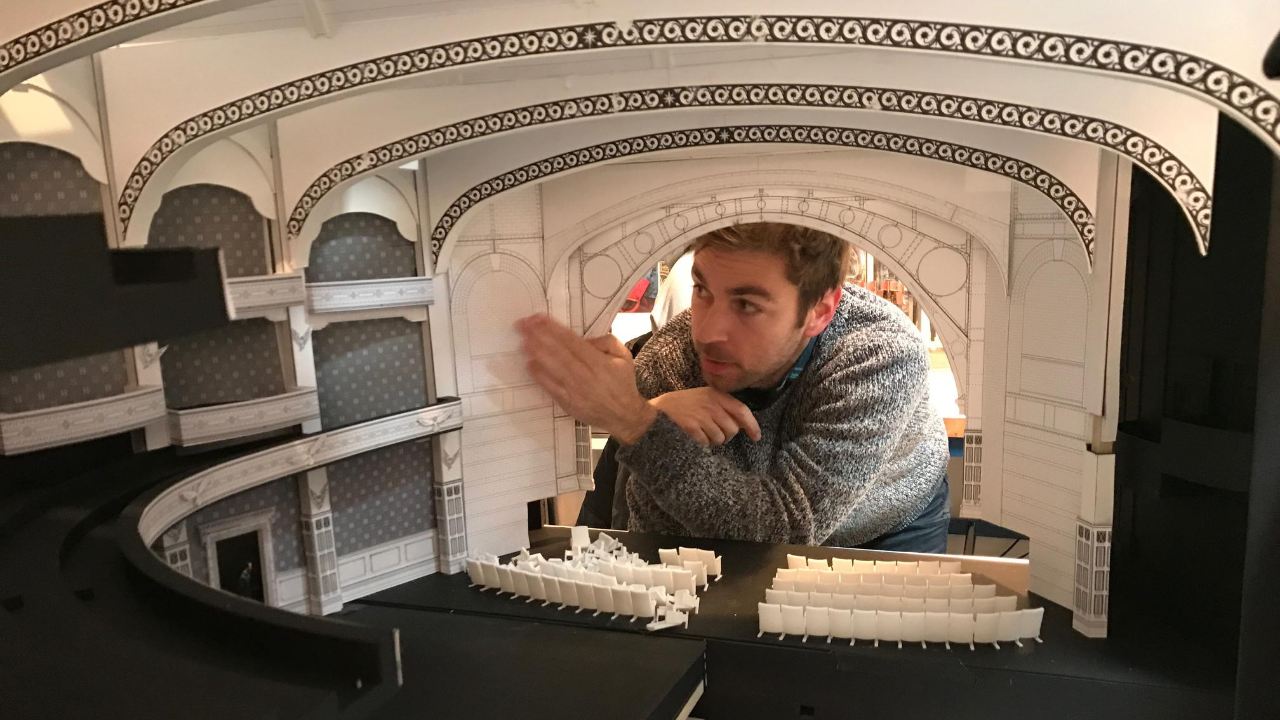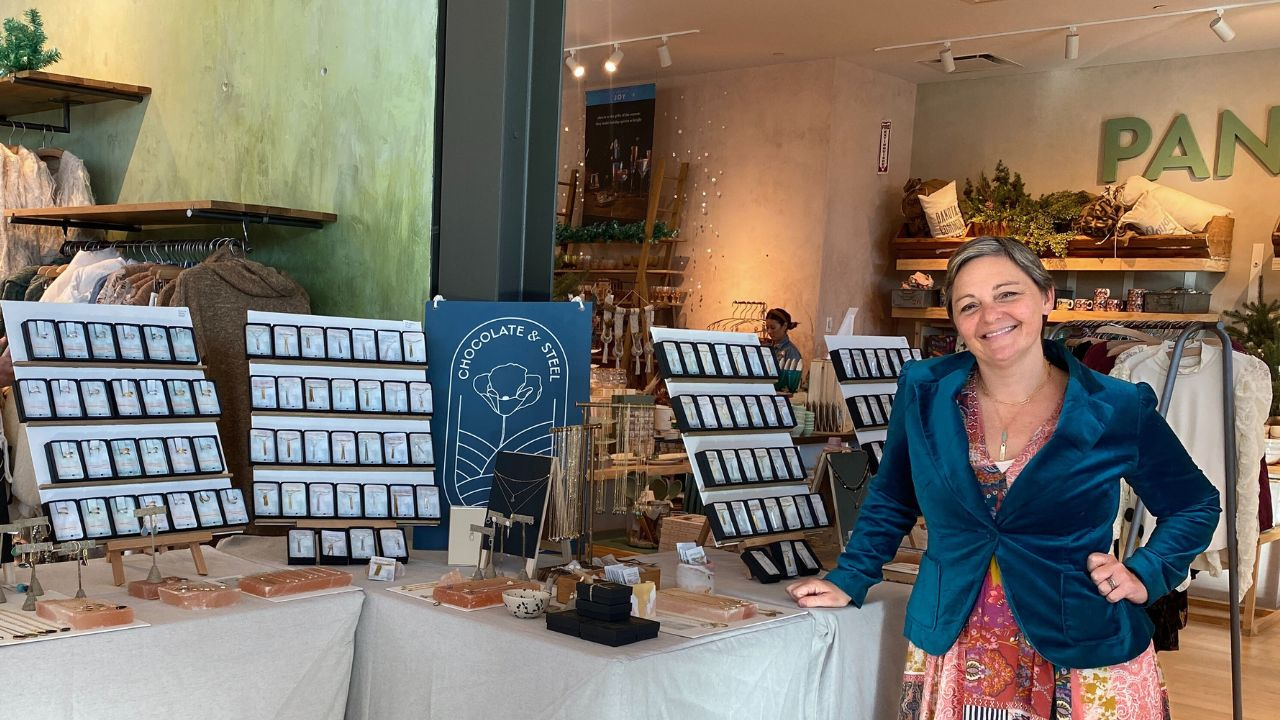
Broadway Set Designer Brett Banakis Shares Industry Experience with ESDD Students
One of the special benefits of our new online learning environment is that students now have direct access to guest speakers from all over the country. Brett Banakis, a set designer for theatre and opera, recently joined us from Brooklyn, New York, as a guest speaker for students in the Entertainment Set Design & Decoration Program, made possible by FIDM Director Cynthia Patino’s industry connection with Nathaniel Hill, Founder/President of Broadway Plus.
FIDM is known for cultivating industry relationships, and consistently brings the value and impact of networking into the curriculum. Due to the pandemic, the ESDD Study Tour to NY was unfortunately cancelled, but because of Cindy’s connections, she was able to secure and arrange this important meeting with such an accomplished professional in the field.
Brett, who currently serves as International Scenic Supervisor for all worldwide productions of Harry Potter and the Cursed Child, spoke to students about his journey and shared valuable industry insights and lessons he’s learned along the way. In a special presentation, Brett showed his research and work with the students.
He also addressed the pandemic and encouraged the students by saying, “Shakespeare wrote his best plays during the plague. It’s a pause. Great things will come out of this. It’s a great time to be in school.”
The meeting started with the students introducing themselves to Brett. Alex Olson was a graphic designer for 12 years before she decided to pursue entertainment set design. Rose Hayes wants to be a set decorator or art director. Elise Tonnessen, a production designer. Souki Gonzalez likes art direction, and set design and decoration. Shirley Guo appreciates the film making process and wants to do a production design masters. Visual Communications grad Jordan Maki continued with ESDD, wants to be an Imagineer and do set design and decoration for film and TV. Julia Vela, who started in theatre in high school, earned a degree in Visual Communications and is now in ESDD to pursue production design. Rhea Pereira has her Bachelors in screenwriting. And the goal of Visual Communications grad Charlie Coons is to work in props and production.
Brett then shared his story. He was a math and science student in high school, and a calculus tutor, then went through a transformation when took a theatre class. He started entering set design competitions and won, discovering his flare and affinity for it. He went to UCLA for set design in the Theatre Program, started designing student films, and fell in love with film making.
It was when he was working for the Geffen Playhouse in Westwood as an assistant, that he met John Iacovelli, a production designer and art director known for his work on Honey, I Shrunk the Kids (1989), Babylon 5 (1993), and Peter Pan (2000), that he got some life-changing advice.
One day they were stuck in traffic driving from the Pasadena Playhouse to the La Mirada Theatre, and John asked him what career he wanted to pursue. “I want to be a designer,” Brett told him. John warned him that if he stayed in Los Angeles, he would end up as a TV art director, but if he took the time and effort honing his craft, he could be the greatest of his generation.
Brett applied to NYU, Yale, Northwestern, and Cal Arts and was rejected by all of them. So he continued to live and work in LA for another year, then applied again to NYU. This time, he got in and it changed his life.
“The thing I like about theatre design is it’s an event that takes place in front of your eyes in one sitting. I like the vitality of it,” he shared with the students. “The creative group has gone through that same arc, the same journey together. TV is different. It’s a different arc.”
“From an artistic standpoint, the payoff point happens at the same time. You have to design a system by which it functions together. It’s the same bag of tools—one stage. It all has to be a magic box that unfolds. There are four walls which is an interesting challenge to engage with.”
When asked if he could talk about the role of an associate designer, he said the AD role is not dissimilar to being an art director on film, organizationally and departmentally. It’s a logistics role. “You are the conduit of information.”
You are an assistant for the designer, dealing with documentation and paperwork. You keep track of everything in the production—paint samples, texture samples, research, photos, props, set pieces, carpets. If something needs replacing or repainting, the associate designer is on top of the information.
As the Associate Set Designer on the stage play of Harry Potter and the Cursed Child, working alongside Artistic Director Christine Jones, Brett gave a presentation to the students about the creative process of the production. “The goal was to achieve something in a magical, theatrical way.”
He said the entire experience for theatre goers was designed. “It was a seamless theatrical event.”
Art bookstores and the library offer him inspiration in his work. He likes to utilize The Picture Collection in NY, which can be viewed online here.
Google searches for image inspiration are good, but he prefers going to the library because once you look a subject up, it may be the book that’s sitting two to the left or two to the right that may be exactly what you’re looking for.
He also loves to look at Shorpy, a blog of random photos. “I let the photos wash over me,” he said.
“You can’t be a designer unless you are a student of history, sociology, and culture.”
When it comes to hand drafting versus software, he recommended that the students learn how to draw, but also have a good understanding of the tools at their disposal such as PhotoShop, Illustrator, Vectorworks, Rhino, and SketchUp.
“To be a good designer, you have to be good at many things. Know how to continually evolve your toolset.”
Categories: Entertainment Set Design & Decoration Industry Partnerships




